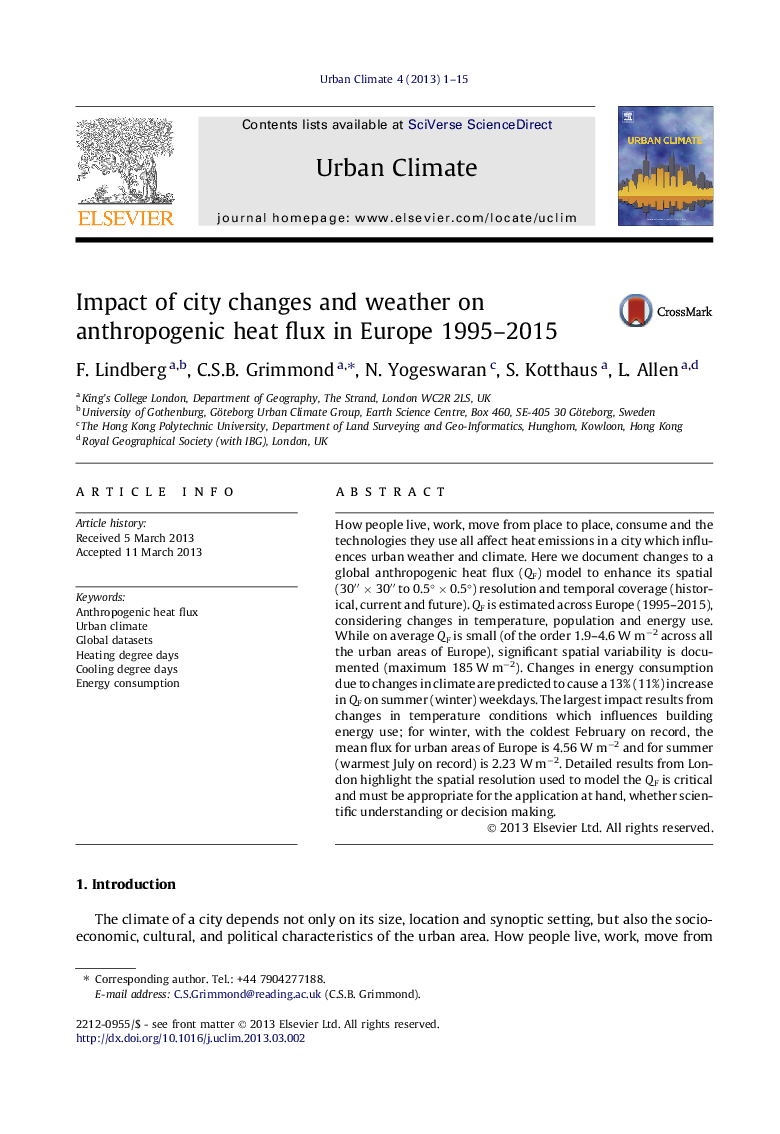| کد مقاله | کد نشریه | سال انتشار | مقاله انگلیسی | نسخه تمام متن |
|---|---|---|---|---|
| 143800 | 163478 | 2013 | 15 صفحه PDF | دانلود رایگان |

• Developments of the global anthropogenic heat flux model LUCY are presented.
• The spatial resolution is enhanced to 30″ (about 1 km2 at the equator).
• QF increases between 1995 and 2005 across Europe.
• Spatial resolution used to model the QF is shown to be critical.
How people live, work, move from place to place, consume and the technologies they use all affect heat emissions in a city which influences urban weather and climate. Here we document changes to a global anthropogenic heat flux (QF) model to enhance its spatial (30′′ × 30′′ to 0.5° × 0.5°) resolution and temporal coverage (historical, current and future). QF is estimated across Europe (1995–2015), considering changes in temperature, population and energy use. While on average QF is small (of the order 1.9–4.6 W m−2 across all the urban areas of Europe), significant spatial variability is documented (maximum 185 W m−2). Changes in energy consumption due to changes in climate are predicted to cause a 13% (11%) increase in QF on summer (winter) weekdays. The largest impact results from changes in temperature conditions which influences building energy use; for winter, with the coldest February on record, the mean flux for urban areas of Europe is 4.56 W m−2 and for summer (warmest July on record) is 2.23 W m−2. Detailed results from London highlight the spatial resolution used to model the QF is critical and must be appropriate for the application at hand, whether scientific understanding or decision making.
Journal: Urban Climate - Volume 4, July 2013, Pages 1–15